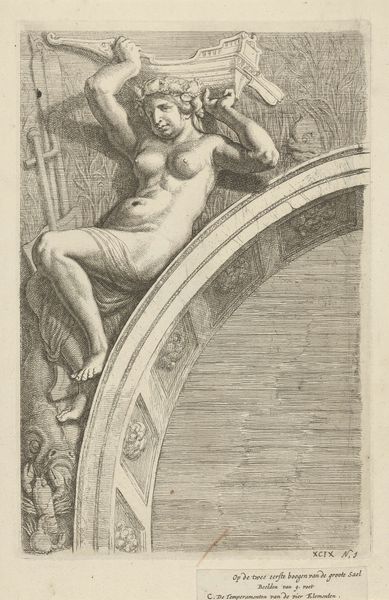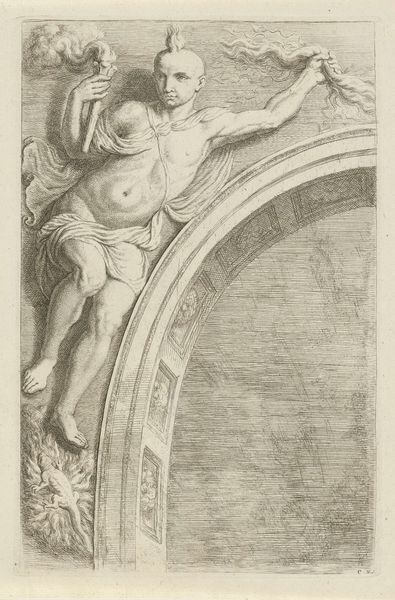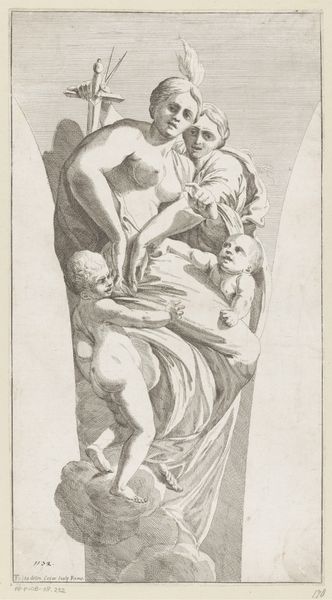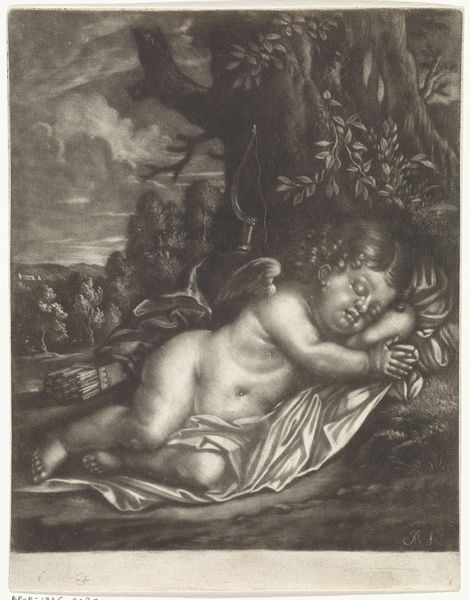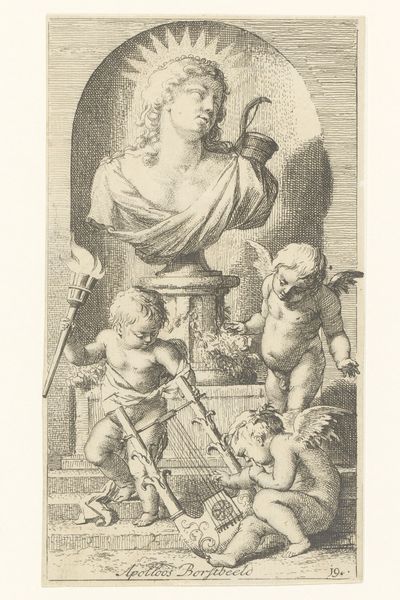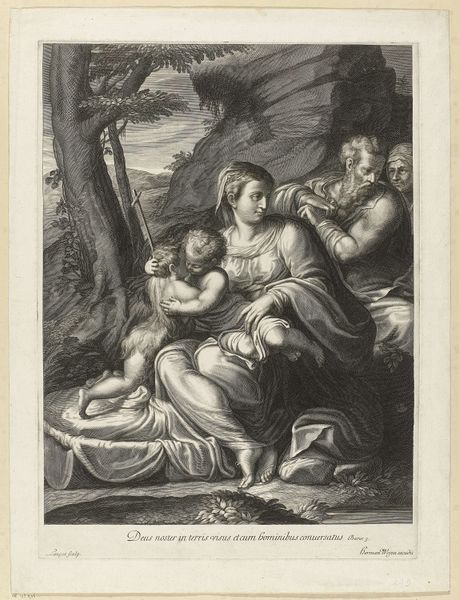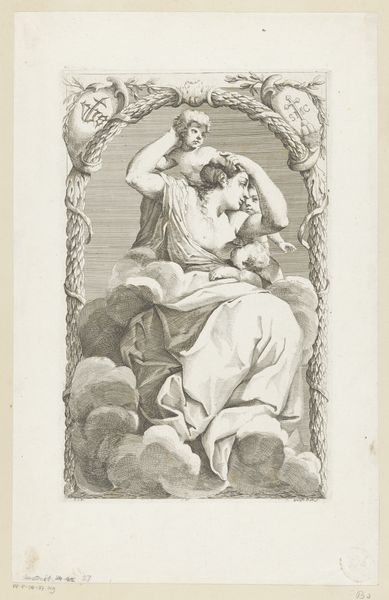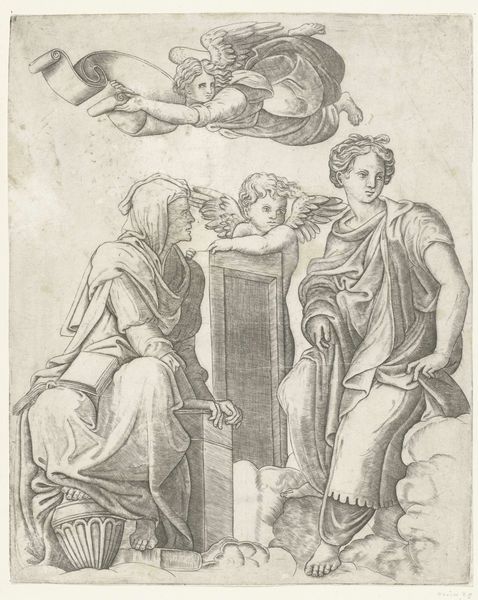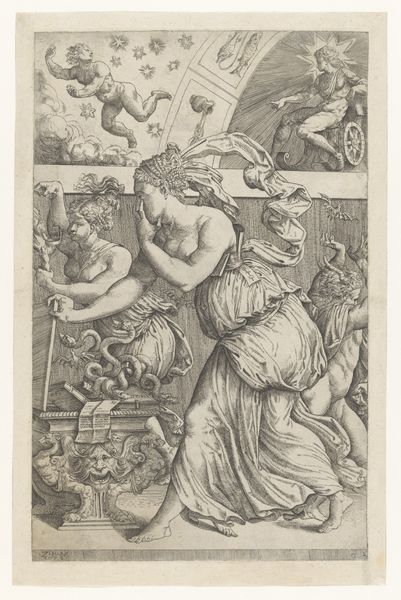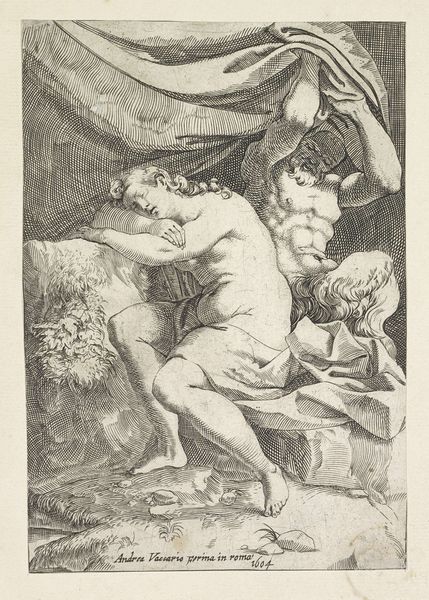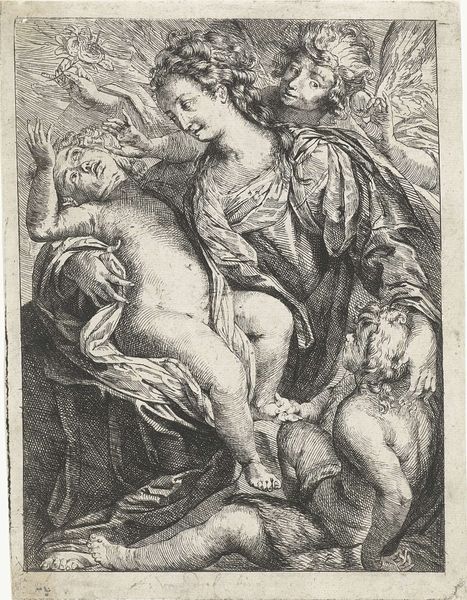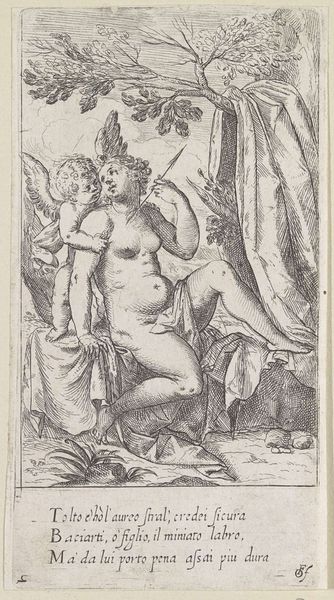
Reliëf met Cybele als personificatie van het element Aarde boven boog in de Burgerzaal van het Stadhuis op de Dam 1663 - 1783
0:00
0:00
hubertquellinus
Rijksmuseum
print, engraving
#
allegory
#
baroque
# print
#
old engraving style
#
figuration
#
history-painting
#
engraving
Dimensions: height 323 mm, width 212 mm
Copyright: Rijks Museum: Open Domain
Editor: This engraving, dating from 1663 to 1783, is titled "Relief with Cybele as personification of the element Earth" by Hubert Quellinus. It strikes me as quite maternal, with that central figure nursing a child amidst powerful animals. What's your take on its meaning, looking at it historically? Curator: Well, seen through a historical lens, this engraving offers a glimpse into the symbolic language prevalent in 17th and 18th-century European civic art. This Cybele, representing Earth, occupies a powerful position above an arch in Amsterdam's Town Hall. Consider that placement. Why depict Earth so prominently in a place of governance? Editor: Is it just about fertility and prosperity for the city? Curator: Partially, yes. But also consider Cybele’s traditional association with power, nature and protection. She is surrounded by symbolic animals – lion, horse, monkey – all integrated within a monumental space designed to project power and stability. Think of the town hall as a stage for civic performance; what role does imagery like this play? Editor: It's like visually grounding the city’s authority, presenting Amsterdam as strong, nurturing, and connected to enduring natural forces. Does the choice of an engraving – a print – rather than sculpture impact how it was received by the public? Curator: Absolutely! Engravings allowed wider dissemination of these allegorical representations, shaping public perception beyond the immediate physical space of the Town Hall. How might mass-produced images impact political thought during the era? Editor: I guess these images subtly shaped public opinion and understanding of power structures at a larger scale than just the City Hall. The choice of print suddenly seems more like a PR move than a artistic expression. Curator: Exactly. Reflecting on it, we’ve gone beyond simply identifying its beauty. We’ve uncovered some connections to cultural narratives of authority and governance through this medium, which in turn have informed how images can create impact on shaping how a city wants to brand itself.
Comments
No comments
Be the first to comment and join the conversation on the ultimate creative platform.
